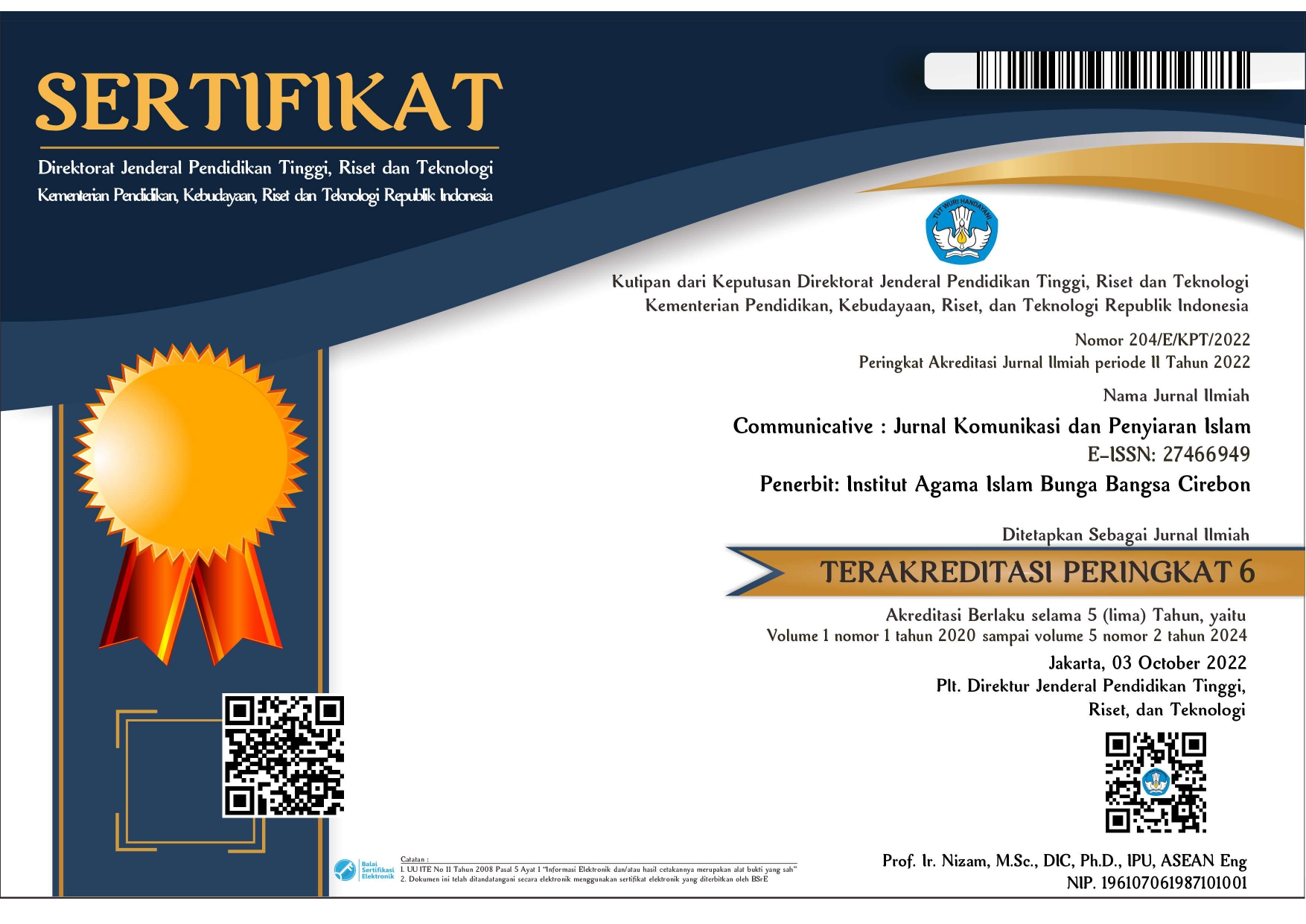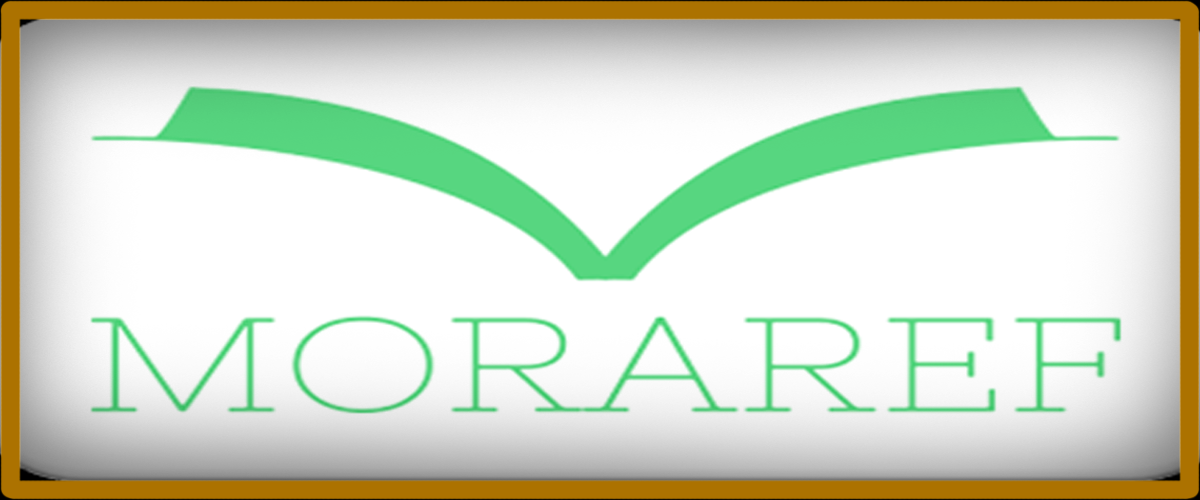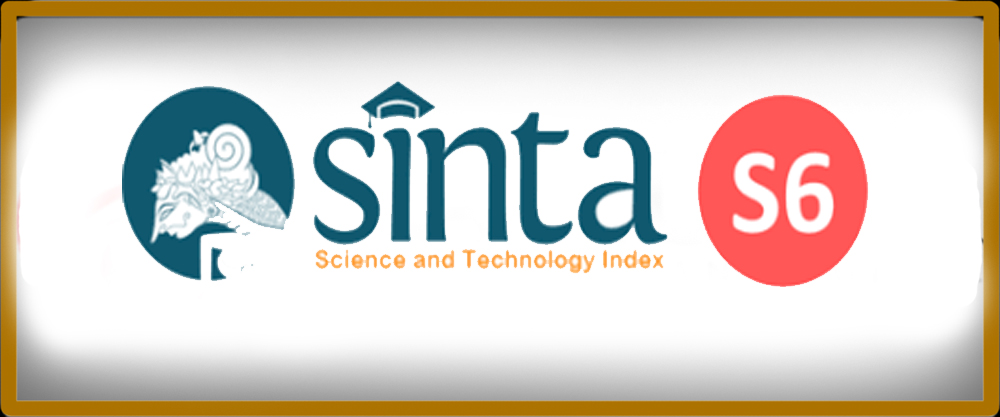TRANSFORMASI PERAN HUMAS DI ERA DIGITAL : PEMANFAATAN MEDIA SOSIAL DALAM MEMBANGUN CITRA PONDOK PESANTREN M. BASIUNI IMRAN DI KABUPATEN SAMBAS
Abstract
The transformation of digital technology has changed the way public relations (PR) operates in various institutions, including the M. Basiuni Imran Islamic boarding school. This research aims to explore the use of social media as a strategic tool in building and strengthening the image of the M. Basiuni Imran Islamic boarding school. Using a descriptive qualitative approach, data was collected through interviews and observing Islamic boarding school social media activities. The research results show that digital public relations plays an important role in creating interesting and relevant content, as well as interacting directly with the public through various platforms such as YouTube, Tik Tok, Instagram and Facebook. In addition, the findings indicate that the use of social media not only makes it easier to disseminate information, but also increases transparency and public trust in Islamic boarding schools. Through social media, the M. Basiuni Imran Islamic boarding school can strengthen relationships with the surrounding community and expand the reach of the programs they offer. Thus, Islamic boarding school public relations that is adaptive to digital technology can contribute significantly to building a positive image and relevance of educational institutions in the modern era.
Downloads
References
Ashley, C., & Tuten, T. (2015). Creative strategies in social media marketing. New York: Routledge.
Baker, M. J., & Frazier, L. (2016). The role of social media in building relationships: An examination of nonprofit organizations. Nonprofit Management & Leadership, 27(3), 387-402.
Boyd, D. M., & Ellison, N. B. (2007). Social network sites: Definition, history, and scholarship. Journal of Computer-Mediated Communication, 13(1), 210–230.
Bryman, A. (2012). Social Research Methods (4th ed.). Oxford University Press.
Creswell, J. W. (2014). Research Design: Qualitative, Quantitative, and Mixed Methods Approaches (4th ed.). SAGE Publications.
Denzin, N. K., & Lincoln, Y. S. (2018). The SAGE Handbook of Qualitative Research (5th ed.). SAGE Publications.
Greenhow, C., & Lewin, C. (2016). Social media and education: Reconceptualizing the boundaries of formal and informal learning. Learning, Media and Technology, 41(1), 6–30.
Hoffman, D. L., & Fodor, M. (2010). Can you measure the ROI of your social media marketing? MIT Sloan Management Review, 52(1), 41-49.
Junco, R., Heiberger, G., & Loken, E. (2011). The effect of Twitter on college student engagement and grades. Journal of Computer Assisted Learning, 27(2), 119–132.
Kaplan, A. M., & Haenlein, M. (2010). Users of the world, unite! The challenges and opportunities of Social Media. Business Horizons, 53(1), 59–68.
Kaplan, A. M., & Haenlein, M. (2010). Users of the world, unite! The challenges and opportunities of social media. Business Horizons, 53(1), 59-68.
Kotler, P., & Keller, K. L. (2016). Marketing management (15th ed.). Pearson.
Lovejoy, K., & Saxton, G. D. (2012). Information, community, and action: How nonprofit organizations use social media. Journal of Computer-Mediated Communication, 17(3), 337-353.
Manca, S., & Ranieri, M. (2016). Facebook and the others. Potentials and obstacles of Social Media for teaching in higher education. Computers & Education, 95, 216–230.
Masruroh, M. A. (2017). Strategi humas dalam era digital: Tantangan dan peluang. Jurnal Komunikasi dan Humas, 5(2), 72-80.
McCorkindale, T. (2010). Can you see the writing on my wall? A content analysis of the Fortune 50's Facebook social networking sites. Public Relations Journal, 4(3), 1–13.
Moleong, L. J. (2017). Metodologi Penelitian Kualitatif. PT Remaja Rosdakarya.
Patton, M. Q. (2002). Qualitative Research & Evaluation Methods (3rd ed.). SAGE Publications.
Rahmat, J. (2020). Metode Penelitian Komunikasi: Paradigma Kualitatif dan Kuantitatif. PT Remaja Rosdakarya.
Said, E. W. (2016). Orientalism. Pantheon Books.
Santosa, H. B. (2020). Komunikasi publik dan media sosial. Jakarta: PT. Grafindo.
Selwyn, N. (2012). Social media in higher education. The Europa World of Learning.
Smith, P. R. (2018). Digital marketing for the next generation: Engaging youth through social media. McGraw-Hill Education.
Tess, P. A. (2013). The role of social media in higher education classes (real and virtual) – A literature review. Computers in Human Behavior, 29(5), A60–A68.
Veletsianos, G. (2012). Higher education scholars' participation and practices on Twitter. Journal of Computer Assisted Learning, 28(4), 336–349.
Wahid, H. (2019). Manajemen komunikasi lembaga pendidikan. Jakarta: Gramedia.
Waters, R. D., & Jamal, J. Y. (2011). Social media and public relations: Models of best practice in the use of social media by charitable organizations. Public Relations Review, 37(4), 328-335.
Whalen, P. T., & Harris, T. L. (2015). Public relations strategies: A framework for effective media engagement. Public Relations Journal, 9(2), 102-117.
Yin, R. K. (2018). Case Study Research and Applications: Design and Methods (6th ed.). SAGE Publications.
Zhao, S., Grasmuck, S., & Martin, J. (2019). Identity construction on Facebook: Digital empowerment in anchored relationships. Computers in Human Behavior, 24(5), 1816–1836.

This work is licensed under a Creative Commons Attribution 4.0 International License.














